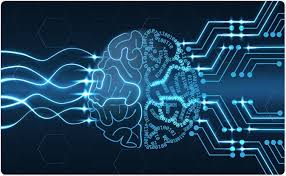Source: news-medical.net
The last few years have seen digital pathology emerge as a vital technology for laboratories around the world, facilitating the sharing of data, supporting the faster and more accurate analysis of tissue samples, and enabling the faster development of new therapeutic techniques. It is being seen as facilitating the progression of medicine, as well as supporting the emerging field of precision medicine.
Digital pathology involves imaging tissue samples, creating digital copies of these images, and sharing them in an online platform so they can be used in research and to inform medical cases around the world. The idea itself is old, but the technology required to support it has only become recently available. Therefore, recent years have seen the rapid widespread adoption of digital pathology as technology has advanced.
Now, following the growth in the digital pathology market, the technologies used in this sector are becoming more advanced. As a result, artificial intelligence (AI) is becoming increasingly used to assist digital pathology, helping scientists develop new capabilities for the technology.
The use of AI in this field will enable scientists to process larger and larger data sets, as well as performing more detailed and accurate analyses. It is expected that AI will help to provide faster diagnoses, as well as to allow scientists around the world to work together to grow their understanding of illnesses at much faster rates than is currently possible.
Digital pathology is not just a tool used by the medical and pharmaceutical industry, it is becoming the new standard of care. As AI becomes more established within digital pathology it will help scientists solve more challenges, creating a new level of healthcare and achieving medical breakthroughs.
The figures back up the growth of the market, with it being valued at $689 million in 2018, and expected to rise by a huge 11.7% between now and 2026. As the market grows, as will the use of AI. Below we discuss how the technology will integrate into the industry.
AI and image analysis
Improving digital image analysis is a major reason AI is being incorporated into digital pathology. It is helping to achieve greater levels of accuracy and consistency.
One area of medicine, in particular, that is benefiting from the combination of AI and digital pathology is oncology. Tissue samples taken from patients with breast cancer have benefited from the method that uses AI to generate diagnoses based on images of tissue samples.
The computer-aided technology is trained to recognize and assess estrogen and progesterone receptors, as well as HER2/neu which are all of clinical relevance in breast cancer. In addition, AI is also enabling the assessment of Ki67 in carcinoid tumors.
Before digital pathology was developed, whole slide image analysis was not possible and scientists had to select regions of interest to study. With digital pathology, the entire slide can be digitized and analyzed, using AI to automatically select the area of interest. This helps speed up the process of analysis, allowing large volumes of slides to be analyzed in short periods of time. This can not only help to speed up diagnosis, but it can also help speed up drug development, as samples are tested much more quickly than conventional methods would allow, determining the efficacy of a candidate drug in shorter time periods.
Integrating AI with clinical data
Scientists benefit from combining the histopathological data obtained, analyzed, and shared with digital pathology along with other sources of clinical data, such as that obtained from omics, historical clinical data, and demographics.
However, it is difficult to integrate this data is it is collected in different formats that do not combine in a useful way. For example, clinical records are mostly kept in an unstructured, free-text format. AI is helping to integrate information from these multiple sources.
Natural language processing, a branch of AI, is being used to extract relevant details from written notes and tying it in with the data collected from whole slide imaging. AI is being developed to help integrate data from any source. Meaning that histopathological data can be enhanced by multiple sources that scientists find relevant, helping to enhance the accuracy of diagnosis and efficiency of drug studies.
Preventing errors
In addition, AI is also being used to help reduce errors being made in diagnostic pathology. Before the birth of digital pathology, the diagnosis from tissue samples relied on the expertise of medical professionals. While experts may have been trained for years in analyzing these sorts of images, the method was still prone to human error.
AI has removed this source of error, reducing the error rate in diagnostic pathology. Not only can the images be analyzed automatically, but they can also be shared with experts around the world for second opinions. When more experts are involved in the analysis, the potential misjudgment of one person has more chance of being caught and corrected, enhancing the accuracy of diagnoses. AI has also been developed to check the conclusions of pathologists, functioning as a safety feature to highlight diagnoses that may be incorrect.
The future will likely see AI being developed to give digital pathology more capabilities and to continue to enhance how it is currently being used. This will have a positive impact on the technology that has ushered in a new standard of care. It will enhance diagnostic testing as well as drug development.
